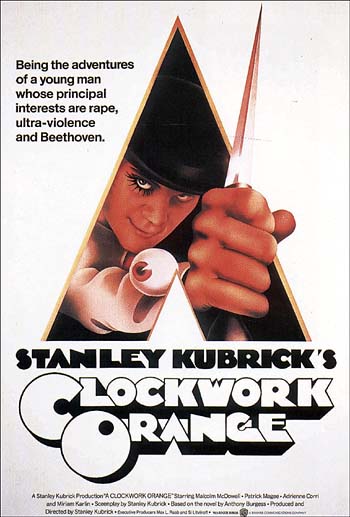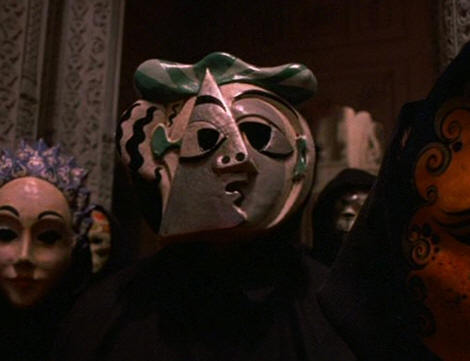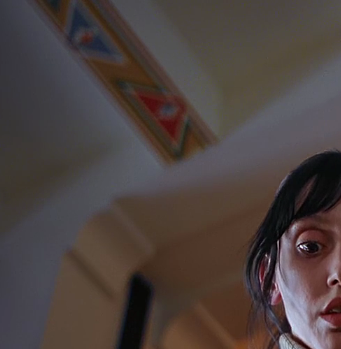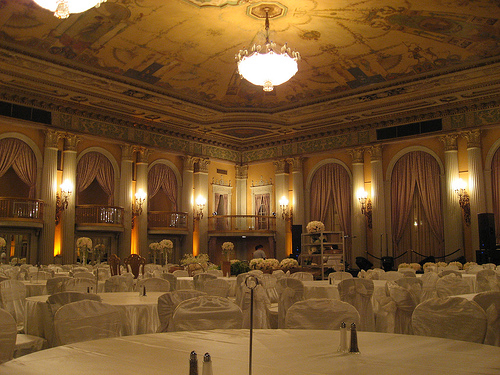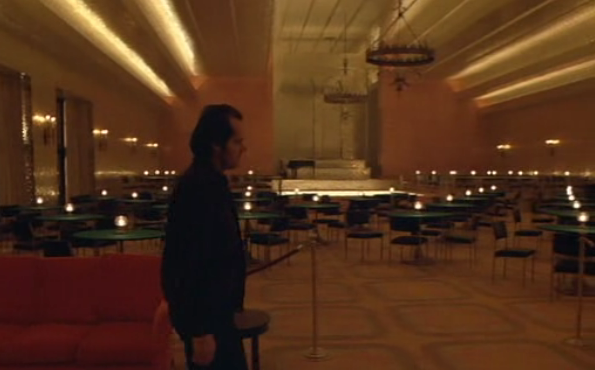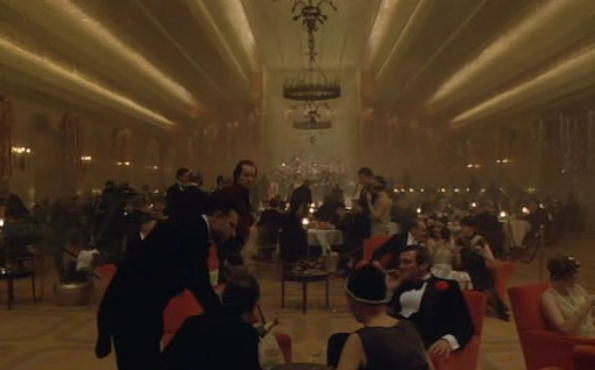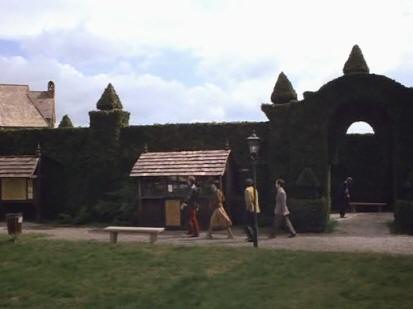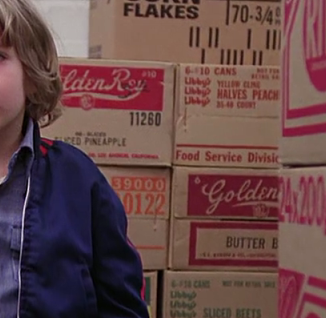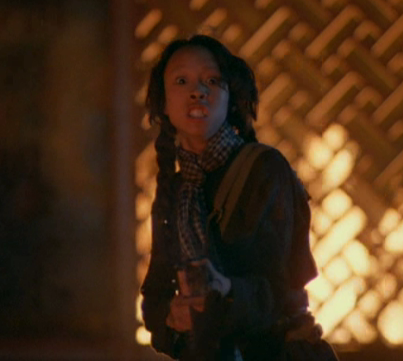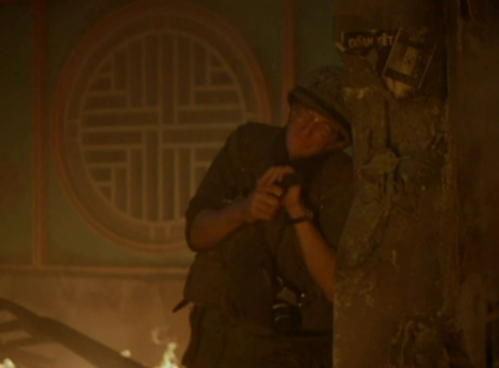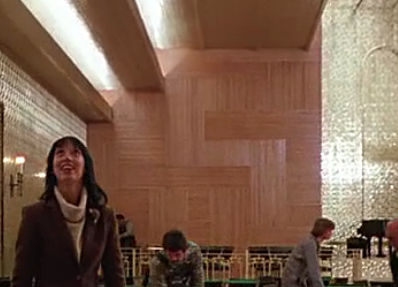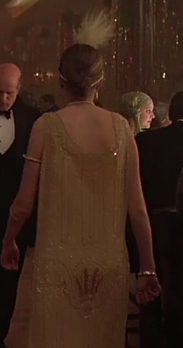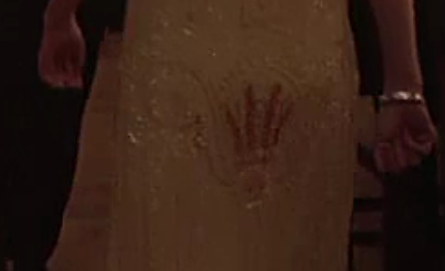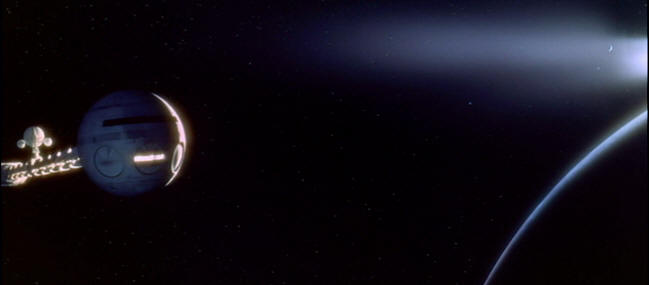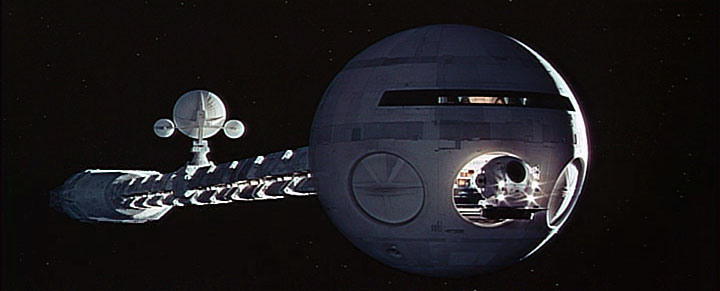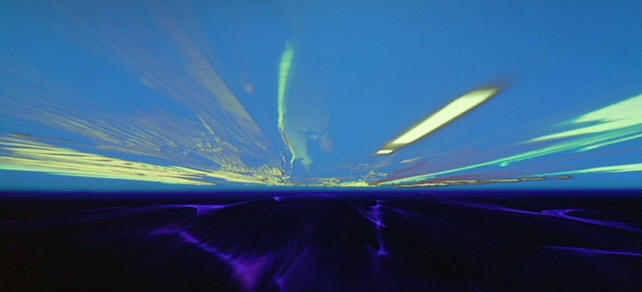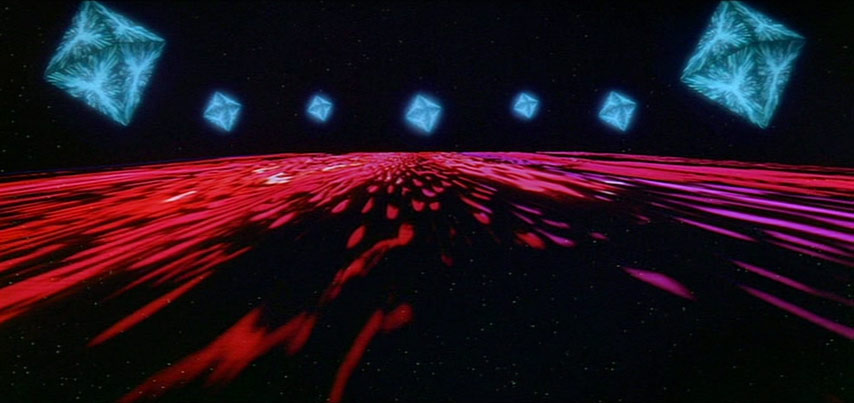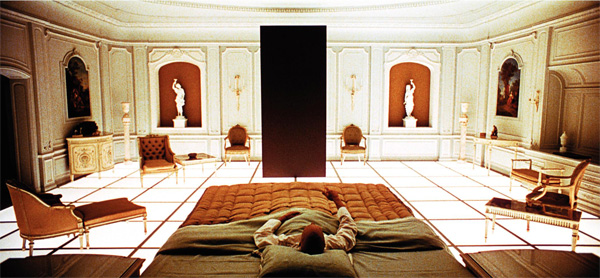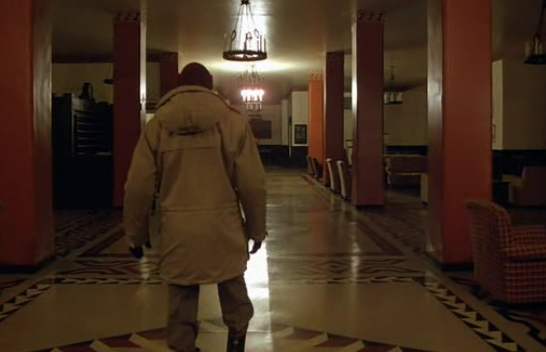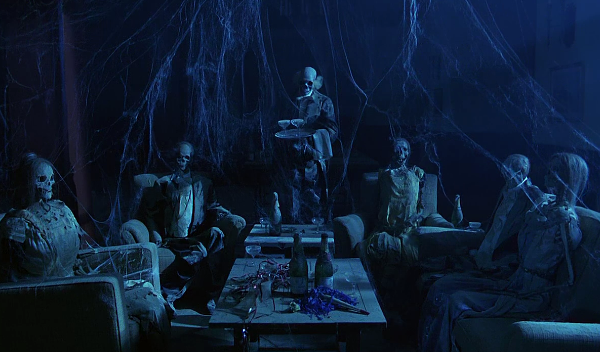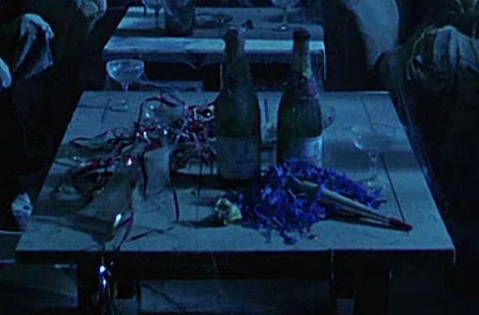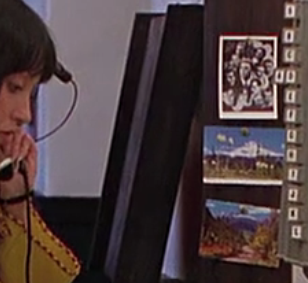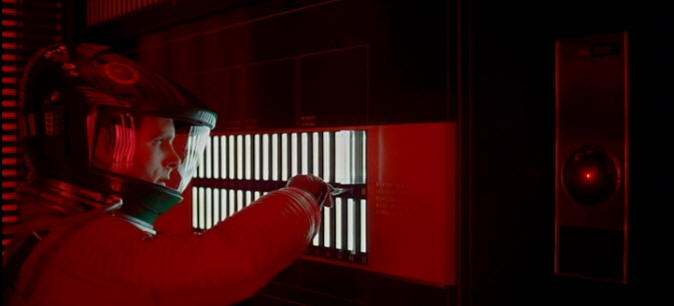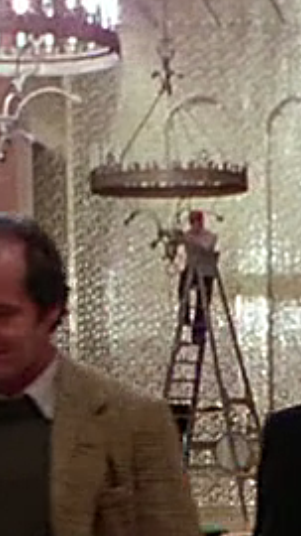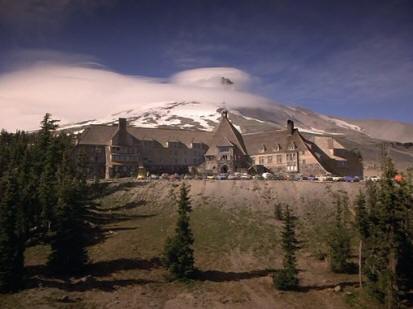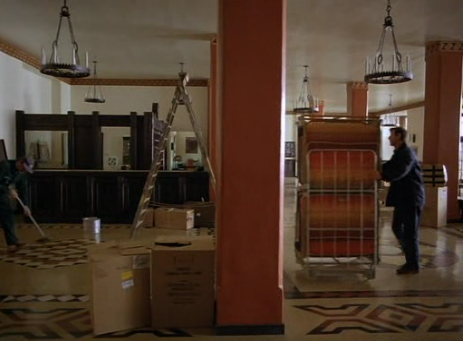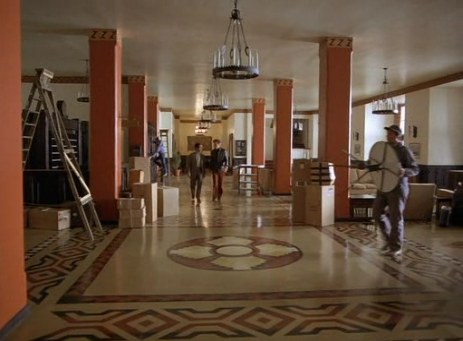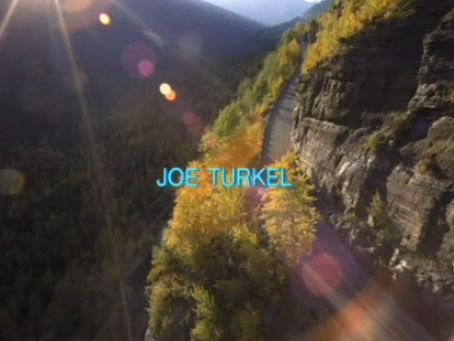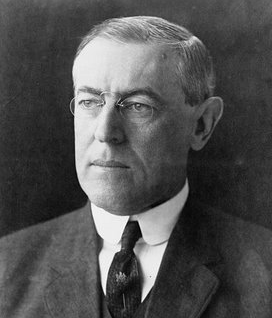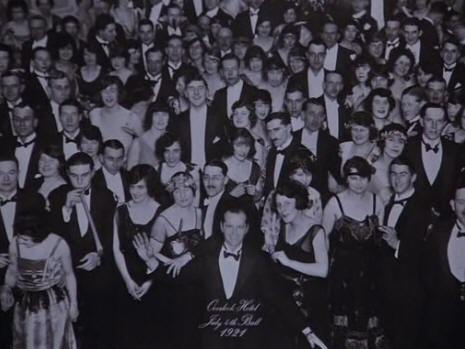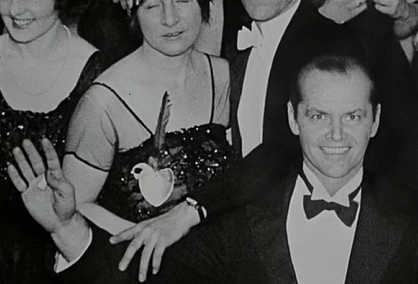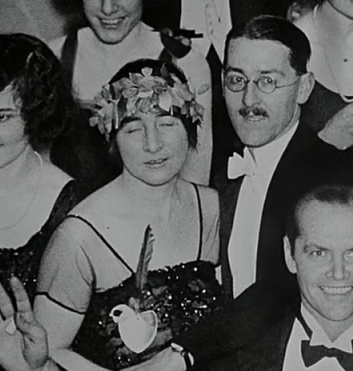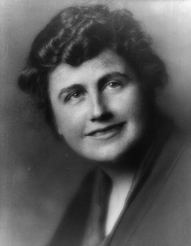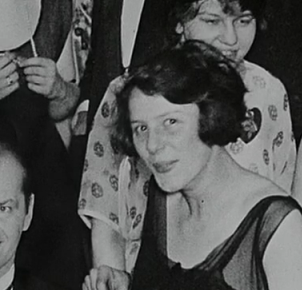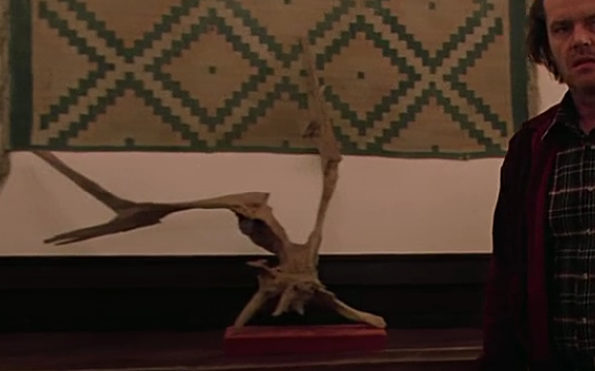CHAPTER FIFTEEN
KUBRICK'S GOLD STORY video supplement (short version)
A 72 minute extended version of the KUBRICK'S GOLD STORY video is available to order from my
Back in the late 1960’s Kubrick made Dr Strangelove, an incredibly controversial comedy about the possibility of nuclear war. With this film Kubrick revealed an intense distrust and distain for the Pentagon. He even included a sub-plot of an ex-Nazi working at the Pentagon as a consultant - no doubt Kubrick was aware of Operation Paperclip while researching the film. Rather than follow this up with an equally controversial film, Kubrick then developed a unique double narrative story structure for his next project. 2001: A Space Odyssey had a surface level narrative, developed with Arthur C Clarke, to attract big money investors like IBM and NASA on the promise of pro space exploration and pro artificial intelligence themes. The surface level narrative of an alien race guiding man’s evolution also fooled critics and audiences for many years, but beneath this was a separate narrative which was communicated through complex subliminal details. Part of the subliminal narrative in 2001 was an attempt by Kubrick at exposing the corrupt political agendas of the space race, but in particular the film featured a message that the Eye of Providence floating above a pyramid (featured on the US Dollar bill) is a form of false enlightenment and a symbol of pyramid structured tyrannical social control. Twice in the film Kubrick shows the monolith from an angle that makes it appear like a pyramid minus its capstone, but instead of an illuminated Eye of Providence, Kubrick placed the crescent of a celestial body at the apex. The enlightenment is instead shown as the sun emerging out of the pyramid base.
The social message is a simple one when decoded. Kubrick was telling us that the powerful people at the apex of our social control system are the unenlightened or falsely enlightened, represented by the Moon or Earth crescent as a sleeping eye, and he was calling for people lower down the social hierarchy to achieve intellectual enlightenment and rise up to replace the corrupt powers at the apex. It was a revolutionary message and the story of the astronauts doing battle with the shady HAL 9000 super computer was the story of how people can defeat their seemingly invincible rulers. After 2001: A Space Odyssey, Kubrick made A Clockwork Orange, and again he subliminally encoded a secondary narrative. Once again he included anti-conspiratorial messages against the power figures of the western world. This time the Eye of Providence within a capstone was featured on the film’s marketing poster. The main character, Alex, had an eyeball attached to the sleeve of his gang costume, and in the poster he reaches out with a knife so that the eyeball on his wrist is positioned in the centre of the triangle. The image is suggestive of the Eye of Providence being gouged out of a capstone triangle. Kubrick further disguised this message by having the triangle designed very similar to the letter A’s featured in the “Clockwork Orange” font, so that it looks like Alex is emerging from a giant letter “A”.
Many years later, Kubrick included a very prominent manifestation of the pyramid and eye in his last film Eyes Wide Shut. It was featured on a mask worn by a cloaked figure in the Somerton Mansion scenes. The capstone overlapped the wearer’s eye and the entire mask was painted in colours identical to the Dollar bill.
These days the pyramid and eye is widely rumoured to be a Freemasonic secret society symbol, although Freemasonic Eyes of Providence tend not to feature pyramids below them. The symbol has also been rumoured to belong to an alleged secret society group called the Illuminati. Now before we move on, I first need to make some statements on the subject of conspiracy theories because this is an area of polarized public opinion. Some people lose interest in a discussion as soon as they encounter any information related to conspiratorial interpretations of modern society, while others lose interest in anything that doesn’t interpret our society as conspiratorial to the core. Personally, I’ve found both extremes of the conspiracy theory debate to be equally at fault. Some of the more hardcore conspiracy enthusiasts actually believe the Earth is controlled by a race of shape-shifting lizards living in underground bases. There are even detailed documentary films and books available on the subject that cite a great deal of historical evidence as “proof” of the lizard race theory. I’ve worked with enough schizophrenics over the years who thought they were either Jesus, the Devil or Paul McCartney to be aware of how people can construct a complex non-reality for themselves, so I can assure you here that I’m not going to try and persuade you of any baseless conspiracy theories with this film analysis. On the other hand I must also assert that the evidence of grand scale corruption in our own western back yards during recent years is overwhelming. We were lied to on a massive scale by political leaders and a largely compliant mainstream media that a war with Iraq was completely necessary [1] [2] [3] [4] [5]. The evidence of a WMD threat from Iraq was manufactured as a false justification for an imperialistic oil war, yet some people still adamantly refuse to acknowledge this and prefer to be believe that we’re fighting a shadowy network of underground extremists who operate globally to cause mass destruction on whatever level they can – which itself is a conspiracy theory. Any serious attempt to decode Kubrick’s films must allow for the possibility that Kubrick himself may have interpreted our society conspiratorially. The subliminal symbols of 2001: A Space Odyssey, A Clockwork Orange and Eyes Wide Shut strongly suggest that this was the case. So I must ask you to join me in the conspiratorial middle ground as we explore The Shining in more detail. I only half suspected that the false enlightenment themes of The Shining were related to the Eye of Providence until an email correspondent pointed out an important set detail in the Colorado Lounge. It’s seen only once in the film. As Wendy leans forward to flick through Jack’s manuscript there is a slightly out of focus strip of colourful designs on the ceiling that do not look like Native American designs. The strip contains alternating blue and red triangles, each with a circular object in the centre. They look very much like the eyeball and triangle design featured on the Clockwork Orange poster. Is this the Eye of Providence?
I began researching the hotel’s upon which Kubrick claimed to have based The Overlook sets. I’d read that the Gold Room lavatory was based upon a bathroom at the Biltmore Hotel. I couldn’t find any verification that such a bathroom existed, but I did find that the Biltmore Hotel contains a hall called the Crystal Ballroom. Here's a map of the room from the Millenium Biltmore Hotel site and below is a snapshot of the room.
Several hotels in the same Millenium chain feature a Gold Room, though they don't look much like the one in The Shining. However, as we're about to discover, Kubrick had some very specific design ideas for The Shining's Gold Room. Although the huge party hall in The Shining features a sign labelling it as simply the Gold Room, listen to Ullman’s choice of words as he guides the Torrance’s inside the hall: “This is our Gold Ballroom”. Bear those words in mind and take a good look at the Gold Room set.
Can you see it yet? The curved arc of the ceiling against the rear wall, and the straight alcoves of light running the length of the ceiling, create a giant image of the blazing Sun or Eye of Providence. There are three scenes in the Gold Room and each one shows a long tracking camera movement in which we see this blazing globe.
The gold room symbolically represents a “gold ball” or blazing sun, just as the Biltmore Hotel features a “crystal ball” room. But why would Kubrick do this? Well, the plain and simple answer is that the rich party guests represent either the Freemasons, Illuminati or whatever elitist political crowd placed the eye of providence on the Dollar bill. An important detail of the dollar bill pyramid is that its base has 13 steps or social hierarchy layers. This is very clearly referenced as Ullman explains the maze, “The walls are thirteen feet high”. Notice that the maze includes pyramid capstone trimmings along the tops of the walls. Being that the maze and the hotel are symbolically the same, this is a round about way of telling us that the Overlook and hence America, is the iron mountain or pyramid featured on the Dollar bill. Remember also that we saw capstone and eye symbols on the ceiling of the Colorado Lounge, and the hotel and maze feature capstone-like structures along the top.
Another detail on the Dollar bill pyramid is that it features the Roman numerals 1776. Some sources say that the Eye of Providence seal was suggested for the dollar bill by design committees during the declaration of independence in 1776, but others claim that this refers to the birth date of the Bavarian Illuminati, a secret society with apparently conspiratorial aspirations for world power. It seems likely that Kubrick believed the latter in relation to the Dollar bill pyramid. The photograph that Jack appears in at the end of The Shining is inscribed with Overlook Hotel, July 4th Ball, 1921. The 4th of July is the declaration of independence, which occurred in 1776, but remember also that in the film’s symbology the word “ball” refers to the sun or Eye of Providence. So the “July 4th ball” more likely refers to the all-seeing eye of the 1776-born Illuminati. Incidentally, the historically accepted date for the inception of the Illuminati was May the 1st 1776. Listen to Jack ranting to his wife as the giant windows of the Colorado Lounge blaze in false light behind him. “Has it ever occurred to you that I have agreed to look after the Overlook hotel until May the first!” So we have the Illuminati inception referred to by exact date and year. (Note: the year 1921 is featured on the photograph inscription. This has been a source of confusion for some time, but I’ll be returning to it with a specific interpretation later in this chapter). There are other details that further suggest the Gold Room décor to be an illuminated Eye of Providence or sun symbol. In the storeroom scenes there are two interesting brand names written on cardboard boxes that were apparently made up for the film. One reads “Texsun” and the other reads “Golden Rey”. Sunrays are what the Eye of Providence or sun emit.
Cross references with The Shining’s sun symbolism were also featured in Kubrick’s follow up film Full Metal Jacket. In one of the final scenes the soldiers manage to flush out a sniper, who turns out to be a woman dressed quite distinctly to look like a Native American woman.
As she fires her Kalashnikov machine gun, a large golden sphere symbol is featured on the wall behind Joker (the soldier she is firing at) and in its centre is a Swastika sun symbol as used by native tribes (not the tilted Nazi version).
Take a good look at this sun symbol and compare it to the giant one in the Gold Room. There even appears to be markings in the Gold Room’s sun walls that are vaguely reminiscent of the swastika (clearer in the HD version). Perhaps this is one of Kubrick’s examples of a metaphor that is easier to decode when his films are cross-referenced.
More clues can be found in the Gold Room. Notice that there are no sunrays running along the centre of the ceiling. This undoubtedly has made it more difficult for audiences to notice the sun symbolism of the room, but as Jack dances about during the party scene we get to see another piece of the message. A woman in a white gown strolls past Jack and on her backside is an unusual red marking. In the standard DVD release it looks like a hand print, which I couldn’t make sense of, but in the HiDef version the marking is much clearer. It shows a small red sphere with four rays coming from it at the same angles as the missing sun beams in the ceiling design.
Just a minute later Kubrick has Jack wipe his Advocat stained hand on Grady’s back, leaving a visible mark. This could well be a subtle hint that we are supposed to pay attention to the marking on the woman’s dress. Notice also that this same woman has a feathered plummage emerging from the front of her forehead - the place where the "third eye" or "inner eye" is said to be located in enlightenment philosophies (Inner eye symbols were also used in 2001: A Space Odyssey in the space craft hostess's uniforms and in the eyelid-like doors of the discovery ship, which opened to reveal the eyeball shaped spacepods).
So in the costume of the woman in the Gold Room we have yet another piece of cross referencing between enlightenment and sun symbolism. In tongue in cheek fashion, Kubrick seems to be implying that the party guests think the sun shines out their arses. Or he may simply be calling them “assholes”, just as with the orgy sequence of Eyes Wide Shut he was calling the European nobility decadent perverts (notice how the paintings on the sets mirror the orgy participants). Halloran also described the hotel occupants as “assholes” in one of his phone calls, “We’ve got a very serious problem with the people taking care of the place. They turned out to be completely unreliable assholes.” Here’s another possible hint of sun symbolism in the Gold Room. Wendy is seen bringing breakfast in bed to Jack, strangely delivered from the Gold Room hallways, but a caption screen before hand says “A month later”. How can there be any eggs available if the Torrance’s have been in the hotel a month? They’d have spoiled weeks ago. Perhaps the symbolic answer can be found in Wendy’s dialogue, “I made ‘em just the way you like ‘em, sunny side up.” Another metaphor relating to the all-seeing eye was first used in 2001. After the stargate sequence seven octahedrons were shown mysteriously floating through space, each of them sucking light inwards over a transparent red landscape. At the very beginning of the shot a white, glowing lower case letter “i” scrolled past in the landscape, symbolizing an “illuminated eye”. In the following shot the octahedrons were removed and the landscape was flipped upside down so that the illuminated “i” was flipped to the top of the screen and the light was restored to the landscape. This mirroring or flipping of the image also hinted that the octahedrons represent pyramid capstones, mirrored at the base. It sounds bizarre, but it appears Kubrick wanted his anti-secret society messages to remain well hidden for some time.
Kubrick again uses the concept of an illuminated letter “i” in The Shining to symbolize the Eye of Providence. The illuminated framing of the mirrors at the Gold Room bar form giant letter “i”s and when Jack sits down we can see that the illuminated section of the bar surface forms another illuminated lower case “i”. This "i" is very similar to the angled one featured in 2001: A Space Odyssey, but it's on the left side of the screen as opposed to the right - the mirrors right screen even hint at this. And to further enforce the symbol we can see the giant eye and sunrays dominating the background of the shot.
The seven diamonds or octahedrons from 2001 also make an appearance in The Shining. A tapestry near Ullman’s office features a criss-cross pattern that forms seven diamonds.
Directly behind this tapestry, on the other side of the wall, are crates of the soft drink 7up, seen when Jack throws utensils across the floor.
In our first close up view of this tapestry Jack stands dead centre screen with his head placed over the exact centre of the tapestry. The shot composition is also mirrored, just as the diamonds of 2001 were pyramid capstones mirrored at the base.
This strange cross symbolism between Kubrick films was an incredibly subtle encoding technique. The individual details have no apparent meaning until the films are cross referenced. Another of Kubrick’s encoding techniques for showing the Eye of Providence above a pyramid was what I’ll call "flattened perspective". The visual symbol only becomes apparent when the viewer abandons their three dimensional perception of the screen content and instead views the film as a flat surface of light and colour. One of the best examples of this is at the end of 2001: A Space Odyssey. The monolith is shown several metres away from Bowman as he reaches his hand out from the bed to touch it, but when the shot cuts to a different angle we see Bowman in the lower third of the screen with the monolith in the upper two thirds. If we view this as a flat image we can see that Bowman only has to stretch a few inches to touch the monolith surface. It’s at this point of flattened image contact that he is reborn as an illuminated baby. He has connected with the reality that the screen content is simply a flat surface.
The flat perspective method was also used in the council meeting scene of 2001 to encode a pyramid and eye image. Our view of Floyd giving his speech showed the table in a pyramid formation with Floyd at the apex and a white cinema screen behind him. During the stargate the light patterns began to fill up the screen with pure white, as if draining away the colours of the film to reveal an empty cinema screen, before cutting to a close up of a human eye followed by a dazzling explosion. If the eye or explosion is mentally projected over the blank white screen in the council meeting then the pyramid and Eye of Providence symbol is completed (see chapter 11 of the 2001 analysis for more details).
A less complex example was used in the tramp beating scene of A Clockwork Orange. Alex and his gang approached the tramp from a bright shining light source depicted at the apex of a pathway, which if viewed in flat perspective formed a pyramid.
In the Shining we get another of these flat perspective pyramids with false enlightenment at the apex. This one occurs in the slow lead up to Halloran’s death. Halloran walks through the hotel Lobby with the camera following behind him. There is a single onscreen light source – a chandelier outside Ullman’s office. Combined with the angle of the floor patterns, and if viewed in flat perspective, we see a pyramid with the illuminated chandelier at the apex. Notice also how Kubrick has carefully framed the shot so that the chandelier remains visible over Halloran's shoulder instead of the shot composition being perfectly symmetrical.
Of course this could just be an accident, so rather than just believe my interpretation I invite you to examine the use of chandeliers throughout the entire scene. Halloran’s shouting of “Hello, is anybody here?” is first heard as Jack limps through a side entrance to the lobby. From over his shoulder we can see again that there is only one chandelier switched on, but it’s not the one near Ullman’s office. It’s the one by the reception.
Is this a blatant continuity error or a hint that the switching of lights was deliberate? Also think about the timing of the flat perspective pyramid and illuminated apex motif. It occurs in the immediate build up to Halloran’s death. The message here seems to be that whoever placed the Eye of Providence on the Dollar bill was also responsible for the genocide of the Native Americans, represented by Halloran. In chapter nine we explored how the ghostly figures of Grady and Lloyd the bartender were basically reflections of Jack talking to himself. We also identified that the party guest with the wine glass was simply another manifestation of Jack. The Englishness of these alter egos is important because it establishes Jack as a symbolic member of the Gold Room party crowd. A very brief shot of Jack in the making of documentary even shows him in a tuxedo.
His banter with Grady that he has “plenty of jackets” plus the casual way in which he is greeted as one of the club, is an outright announcement that in this scene Jack is really dressed in a tuxedo and that the presence of his cheap clothes is simply a visual lie to keep the audience locked into the surface narrative. There is also a cross symbolism between the ballroom party and the slaughter of the natives. Jack first hears the music of the party while wandering about in the halls, at which point he sees balloons and party confetti scattered about the lobby.
However, when he strolls into the Gold Room party there are no party balloons or confetti anywhere, not even in the adjoining hall.
The answer to this riddle is simple. The so-called "party" is a celebration of native genocide. The balloons and confetti appear in the lobby because that’s where Halloran is murdered. After Wendy sees his dead body the party guest with the gash in his head confirms the genocide celebration metaphor, “Great party isn’t it.” And it’s confirmed yet again as Wendy sees the skeletons in the lobby. They’re dressed up in party gear, they’re surrounded by bottles of wine, and a couple of party paraphernalia items can be seen on one of the tables.
The term “Gold Ball” as a metaphor for the sun may also apply to the tennis ball Jack throws about. The cross symbolism between tennis ball (sun) throwing and axe swinging provides yet another reference that the falsely enlightened party crowd are responsible for genocide. In the HiDef DVD I noticed the following postcards in one of the reception area scenes. They appear to show yellow weather balloons floating about. Perhaps these are just innocent postcards or perhaps they're related to the tennis ball and sun symbolism - it's difficult to tell as they're barely visible in the shot.
In several of Kubrick’s films candle motifs are used to symbolize the falsely enlightened because they are similar in appearance to illuminated letter “i’s. In 2001, Bowman defeated HAL by unscrewing and exposing the cells of HAL’s brain. These cells had the appearance of candles or letter “i”s. Rather than switching the lights off Bowman exposes them, so to speak.
Bowman’s final rebirth into enlightenment occurred in a room that was mysteriously lit through the floor while the candles in the walls were unlit.
The candle motif for the falsely enlightened was also prominently used in the subliminal narrative of Barry Lyndon, and here in The Shining Kubrick uses circle formations of candle shaped light bulbs in the chandeliers. 2001’s motif of an astronaut unscrewing candle-like lights to defeat his computer opponent is re-used in the first Gold Room scene of The Shining. A man is stood on a step ladder unscrewing bulbs from a chandelier.
The ladder itself may also be representative of the pyramid or mountain seen on the Dollar bill. In the Closing Day section of the film we see a view of the Overlook beneath a mountain. And the top of the mountain features a ring of clouds around its peak. This image fades to a shot of a ladder viewed perfectly side on in the lobby with a chandelier passing just behind its apex, just like the one in the Gold Room was viewed side on with a chandelier at the apex. The camera then strafes sideways from the ladder (pyramid) and across the same view of the lobby hall that we see when Halloran is killed, and again lit chandeliers are seen at the apex of the hall. It’s almost like Kubrick is whispering at us, saying “Just perceive the hallway and chandelier in its perceptually flattened out form like the ladder”.
It can be argued that Kubrick simply used that chandelier design because he’d seen it in the designs of the Ahwahnee hotel, but it’s important to remember that Kubrick was an expert opportunist. Rather than just create artificial symbols out of thin air, he preferred to hunt down aspects of the real world that co-incidentally fitted in with the themes he wished to communicate – it was one of his methods of plausible deniability. For example, the elevator door design was also borrowed from the Ahwahnee hotel, but Kubrick used it to symbolize a gaping mouth. In fact the entire film can be considered in the same context. Kubrick borrowed the bare plotline narrative of Stephen King’s best selling horror novel not because he simply liked it, but because the book just happened to provide a raw template for Kubrick to encode his own story of genocidal history. Kubrick’s choice of a series of imposing mountain range shots in the opening scenes may have also been linked with his desire to encode these pyramid and eye of providence metaphors. In particular, the sun shines over mountain peaks creating lens flares across the screen – quite simply, the mountain peaks are shining. The presence of Indian-like screaming in the opening score also reaches its peak at the exact moment at which the sun's lens flare reaches its peak of brightness.
The battle against elitism was one of Kubrick’s primary motives as a film maker. It infected all of his films from Dr Strangelove right through to his final film Eyes Wide Shut. Early in The Shining he even identifies this directly with dialogue. As Ullman proudly shows off the Colorado Lounge we hear the following: Ullman: “This place has had an illustrious past. In it’s heyday it was one of the stopping places for the jet sets … even before anyone knew what a jet set was. We had four presidents who stayed here. Lotsa movie stars.” Wendy: “Royalty?” Ullman: “All the best people.” That’s quite an elitist statement. The framed photos displayed in the Overlook all seem to be based around the same crowd of people. The figures in these pictures are frequently shown out of focus so that they appear as luminous apparitions.
The film is set in the 1970’s and so there should be a variety of colour photos relating to more recent decades in the hotel’s history, but they’re all black and white and all seem to be depicting some historical celebration or party event. Not only that, but the hotel shown in these pictures isn’t the Overlook. It's another location entirely. Could the depicted party event be the declaration of independence or the formation of the Bavarian Illuminati, being that those events are also referenced elsewhere in the film? Maybe. However, there is one particular detail that suggests a different historical event. The final photo of the film features the date 1921. I’ve searched around a great deal to find historical events related to that year and I’ve only found two things that resonate with the other themes described in this analysis. The first is that 1921 was the year of retirement from office for the US president Woodrow Wilson, who handed over all control of America’s banking systems to the privately owned Federal Reserve. The result of this was America’s abandonment of the gold standard, the Wall Street crash of 1929 and the great depression. Note that the exact date of retirement of Wilson was March 4th 1921 and the date July 4th 1921 is shown in the photo of Jack waving goodbye to us. Possibly significant concerning the 4th of July is this speech given by Woodrow Wilson on 4th July 1914 at Independence Hall. In it Wilson very cleverly dismisses the Declaration of Independence as an irrelevant historical document, no longer applicable to America.
Possibly in relation to Jack's awful typing skills, I stumbled across the following 1913 New York Times article that mocked Woodrow Wilson's typing skills. Being that Jack is charged with “taking care” of the Overlook, which as noted is a representation of America, it’s only logical that he represents one of its Presidents. Several more details imply that Jack symbolizes Woodrow Wilson specifically. In the Gold Room party scene, Jack offers to pay for his drink and is told, “Your money’s no good here. Orders from the house.” When he enquires “I’m a man who likes to know whose buying their drinks Lloyd”, the bartender answers, “It’s not a matter that concerns you Mr Torrance. At least not at this point.” These cryptic innuendos make sense if we consider Jack as an incarnation of President Woodrow Wilson and his relationship to America’s monetary system. In particular “Orders from the house” could be a reference to Colonel Mandell House, the personal advisor who guided Wilson in surrendering the US government’s right to issue currency to the private bankers. Another possibility is that “Orders from the house” could be referring to the European-based House of Rothschild, a banking dynasty which had dominated and controlled the majority of Europe’s central banks for hundred’s of years and which was also rumoured to be the behind-the-scenes controlling force of the Federal Reserve System. As we’ve noted, March 4th 1921 is the date that Woodrow Wilson retired. It's exactly two months out from the July 4th date presented on the photo of Jack. And so in the final photograph we see Jack as the Master of Ceremonies, or President, waving goodbye (or saying hello) to us. A very important detail is that a man stood behind Jack has his hand placed upon Jack’s raised arm as if about to pull him back into the crowd and out of our sight.
And an even more important detail, noticeable in the HiDef release, is that in the palm of Jack’s hand is a small folded up piece of paper, held under his thumb.
Another reference is that the man with his hand on Jack's arm is almost a dead ringer for a young Woodrow Wilson, bar the moustache. And the woman with him could easily pass for Woodrow's wife Edith Wilson. Notice also that the woman has a broach on her dress that looks like a combination between a heart and a dove. The only online references I could find between this and Edith Wilson was that the french apparently gave her a diamond Peace Dove broach during America's involvement in the failed League of Nations, later to resurface as the United Nations, but then it may just be a broach.
If this family resemblance is correct then it's a clever trick by Kubrick, as audiences would ineveitably focus their attention on Jack's face. Another possibility, and I know I'm stretching on this one, is that the woman at Jack's side bares strong similarity to Woodrow Wilson's daughter Margeret Woodrow Wilson.
The lyrics of a ballroom song called “Midnight, the stars and you” are heard as we puzzle over this photo, and they emphasize the importance of whatever message is conveyed in Jack’s hand, “Your eyes held a message tender, saying ‘I surrender all my love for you’.” Whatever message is held in Jack’s hand is absolutely crucial to the meaning of the 1921 photograph. Here’s a Woodrow Wilson quote that links many of these ideas together: “I am a most unhappy man. I have unwittingly ruined my country. A great industrial nation is controlled by its system of credit. Our system of credit is concentrated. The growth of the nation, therefore, and all our activities are in the hands of a few men. We have come to be one of the worst ruled, one of the most completely controlled and dominated Governments in the civilized world no longer a Government by free opinion, no longer a Government by conviction and the vote of the majority, but a Government by the opinion and duress of a small group of dominant men.” -Woodrow Wilson, after signing the Federal Reserve into existence. There is some debate over exactly when and where Wilson spoke these words and there are some variations on its exact wording. Some sources even claim it’s a fraudulent quote. Resolving such a matter is beyond the scope of this article and therefore I invite the reader to explore the issue for themselves. Here’s another quote from a policy article written by Woodrow Wilson called The New Freedom. (the quote can be found near the beginning of the article) “Since I entered politics, I have chiefly had men's views confided to me privately. Some of the biggest men in the United States, in the field of commerce and manufacture, are afraid of somebody, are afraid of something. They know that there is a power somewhere so organized, so subtle, so watchful, so interlocked, so complete, so pervasive, that they had better not speak above their breath when they speak in condemnation of it. They know that America is not a place of which it can be said, as it used to be, that a man may choose his own calling and pursue it just as far as his abilities enable him to pursue it; because today, if he enters certain fields, there are organizations which will use means against him that will prevent his building up a business which they do not want to have built up; organizations that will see to it that the ground is cut from under him and the markets shut against him. For if he begins to sell to certain retail dealers, to any retail dealers, the monopoly will refuse to sell to those dealers, and those dealers, afraid, will not buy the new man's wares.” Perhaps the note in Jack’s hand refers to one or more of these quotes by Woodrow Wilson. And even if the quotes and the books that cite them amount to nothing more than hearsay, it’s still possible that Kubrick believed them. The various topics he chose as film subjects required him to study history extensively. This all perfectly ties in with the anti-elitist messages of The Shining. Extending this interpretation further, it must also be noted that the Federal Reserve Act which Wilson secured a legal passage, was allegedly conceived and written by a cartel of powerful banking families operating through a private club called the Jekyll Island Club. The Jekyll Island Club Hotel, where the group held their meetings, is still going today and its website boasts the following: “At the turn of the century, tycoons, politicians, and socialites flocked to Jekyll Island to revel in their own luxury and America's burgeoning wealth. The JekyllIsland Club was described in the February 1904 issue of Munsey's Magazine as ‘the richest, the most exclusive, the most inaccessible club in the world.’ Its impressive members included such luminaries as J.P. Morgan, William Rockefeller, Vincent Astor, Joseph Pulitzer, William K. Vanderbilt, and other recognizable names on the roster were Macy, Goodyear, and Gould.” And here’s another quote from the same page on the hotel’s site, specifically related to the Federal Reserve Act. “Because of the concentration of internationally prominent business leaders, the JekyllIsland Club has been the scene of some important historical events, such as the first transcontinental telephone call placed by AT&T president Theodore Vail on January 25, 1915. Finance, as well as politics, was of paramount concern to many club members. J.P. Morgan could create or quell economic panics on Wall Street with the financial resources at his personal command. George Baker, head of the First National Bank of New York, and James Stillman, head of the National City Bank of New York, also members of the Jekyll Island Club, were nearly as wealthy as Morgan. In 1907 when a particularly virulent economic panic caused a run on the banks, one of these three men paved the way for a secret meeting on Jekyll. Travelling under assumed names, Senator Nelson Aldrich, four other bankers of national importance, and the Assistant Secretary of the Treasury made their way to Jekyll posing as duck hunters. Meetings the following week led to the development of the Aldrich Plan, which called for a centralized banking structure for the country. Although Congress did not pass the plan in 1912, President Woodrow Wilson and others used the Aldrich Plan as the basis for another plan that became the Federal Reserve Act, establishing the Federal Reserve System.” Incidentally, while researching the history of the Jekyll Island Club, I found that the island features a location called Driftwood Beach. This links in yet again with the symbolism in The Shining, although possibly by mere accident. The strange pieces of misshaped wood seen on tables in the Colorado Lounge and near Ullman’s office are actually pieces of Driftwood.
Drftwood is basically twisted dead trees that sometimes wash up on beaches and are often used for ornamental décor.
Another possible interpretation of the year 1921 in Ihe Shining is that it could refer to the creation of the Council on Foreign Relations. The CFR is a powerful think tank and foreign policy group that has had great influence on US politics and economics since its inception and has included the membership of many presidents, as well as some of the same family bloodlines that were involved in the Jekyll Island Club. As far as I can tell, the CFR is not specifically referenced elsewhere in The Shining, but in 2001: A Space Odyssey, Dr Heywood Floyd tells the members of his private moon base meeting “Anyway, this is the view of the council”, at which point the camera angle shifts to show the pyramid and capstone symbolism of the room’s table with its illuminated screen at the apex. Here are links to documents that verify the CFR’s interest in space exploration [1] [2]. The case for CFR references in 2001: A Space Odyssey are plausible, but in The Shining references to Woodrow Wilson and the passing of the treasonous Federal Reserve Act are more prominent as an explanation for the year 1921.
Soldiering on with conspiracy territory, (we may as well get it all out the way in this chapter) Ullman describes in the Gold Room that, “We can accommodate 300 here very comfortably”. If Kubrick really was a firm believer in conspiracy concepts like the Illuminati then he may also have had concerns about a slightly less well-known conspiracy theory – the Committee of 300, and hence this would be Ullman announcing to us which organisation the party guests represent. Ullman’s mention of “Royalty” as “All the best people” is probably an important motif in The Shining. Kubrick’s prior film, Barry Lyndon, openly showed the ridiculous lengths that ambitious men will go to in pursuit of a Royal title in the British Honours System, also known as the Peerage System. This is a point at which Kubrick was exploring elitism that can absolutely be verified – ie there’s nothing theoretical in the matter. It’s absolute historical fact that Britain has a nobility club extending across the globe – part family bloodline and part loyalty-earned membership. In The Shining the circular formation of candle-like light bulbs in chandeliers at the apex of a pyramid during Halloran’s death could be related to the concept of Royal peerage. That’s a long shot, but remember that to crack the code of a Kubrick film no stone should be left unturned. While researching this article, I also found that hedge mazes were originally created as amusement for king’s and prince’s. Interesting. Kubrick also liked to use phonetic puns to communicate his subliminal narratives and so Halloran’s comment over his telephone that, “I’m supposed to go up there (the Overlook) and find out if they have to be replaced,” could be jokingly referring to Halloran replacing the chandelier bulbs or falsely enlightened leaders, much like the step ladder guy in the Gold Room. Of course once he gets near the lit chandelier in the lobby he is murdered instantly. Ullman, despite his polite persona, seems to be in cahoots with Jack regarding false enlightenment. He sits in front of a falsely illuminated window while interviewing Jack in his office, he gives all the practical and menial hotel work to Wendy as if it’s a given and he overlooks the presence of menial workers carrying furniture and luggage about the hotel. Could it be that he’s hired Jack for the job of president? The reports that I’ve read about the deleted ending of The Shining, in which Ullman visits Wendy and Danny in a hospital, pretty much confirm that he is indeed a high ranking figure of the elitist crowd that Jack serves during his term in office at the Overlook, but that’s a subject we’ll return to later. Before we move on to the next chapter, if you’re not familiar with a lot of the conspiracy theories discussed here then you may well be jumping to a “Rob’s a bit of a nutter” conclusion. I’ve found that any mention of modern day conspiracies generates that reaction from a small number of readers, regardless of the evidence available. It basically amounts to wishful denial from people who want to maintain an illusion that modern governments care about their populations. Although I don’t necessarily believe in the Illuminati, the Committee of 300, the New World Order and so on I will say that the vast majority of centralized governments throughout history, be they Roman, Chinese, British, Russian, German or American, have shown themselves time and time again to be driven by the aspirations of corrupt groups of men who wish to live in luxury as an unchallenged elite. Only a fool could fail to recognise that fact. Kubrick knew it and whether he successfully pointed his accusing finger at the right people or organizations is not a matter I can resolve on your behalf. This chapter is simply my attempt to help you hear Kubrick’s conspiratorial messages.
|


